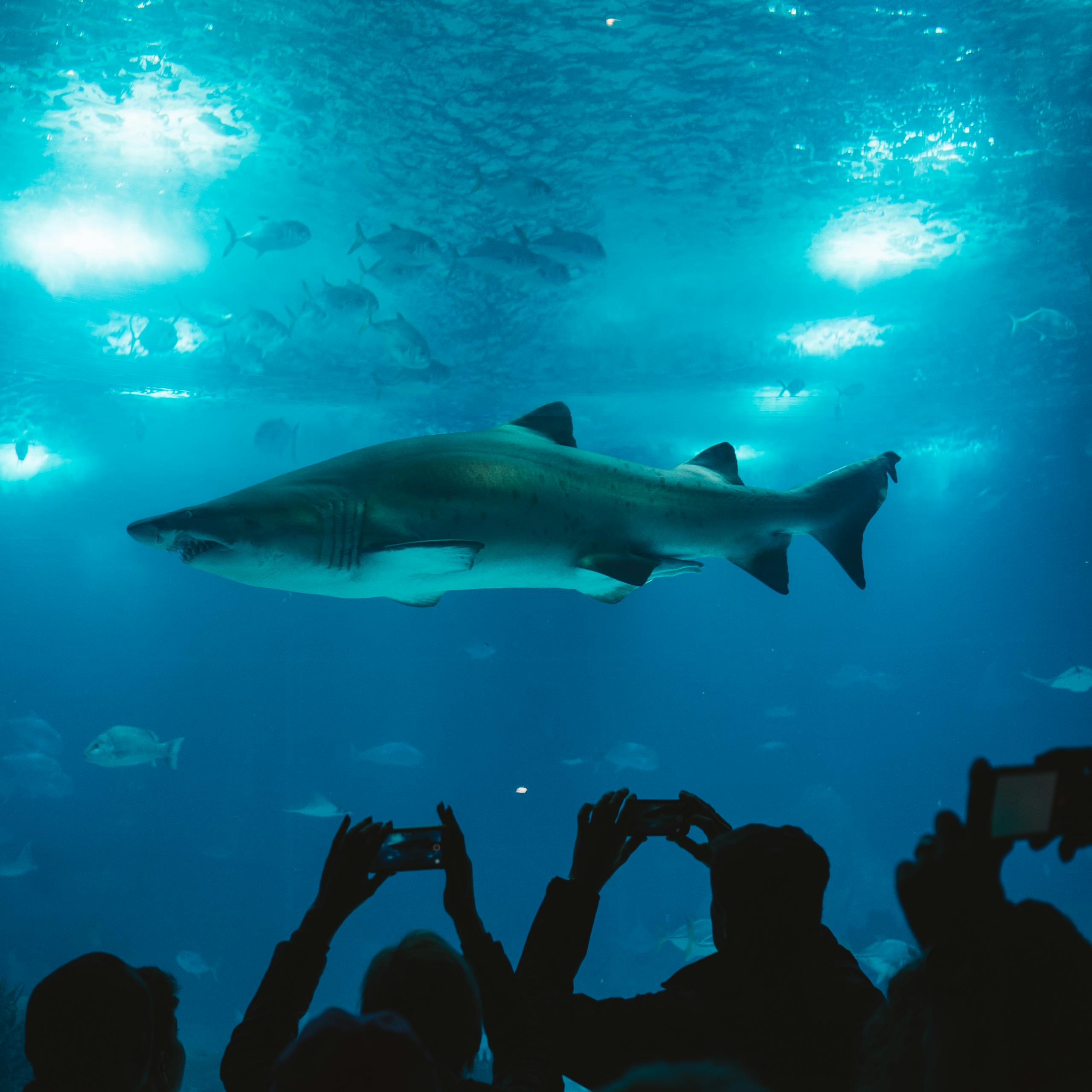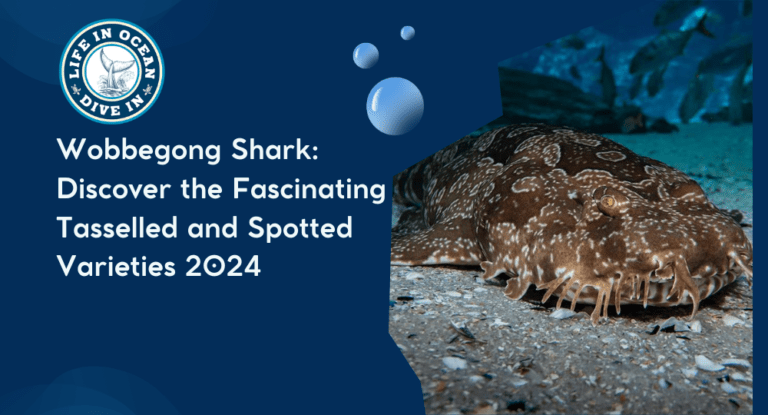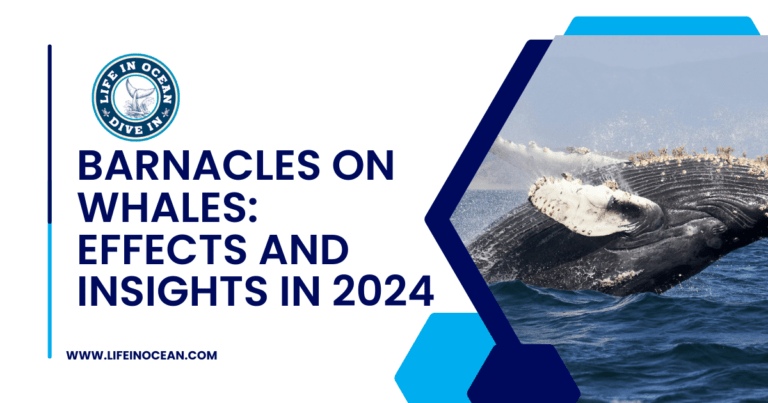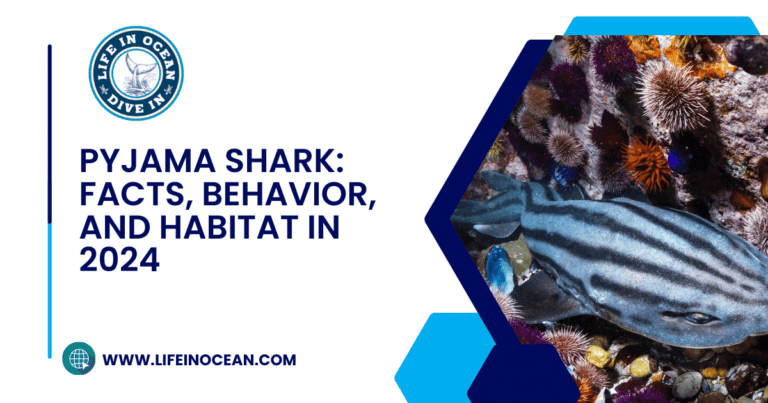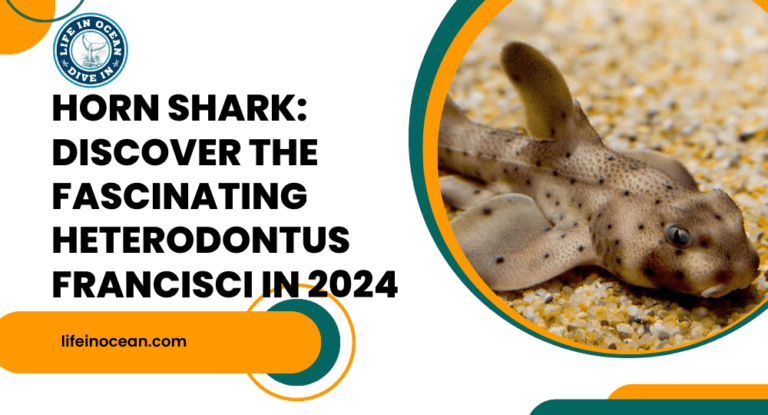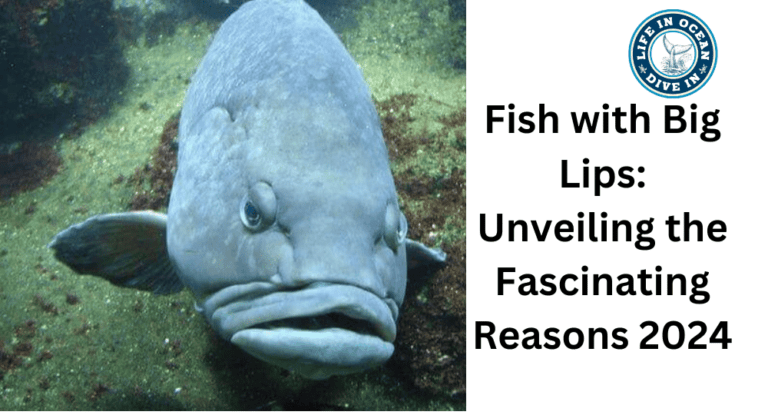The longfin mako shark, or Isurus, is a large, extremely fast-swimming shark that inhabits temperate and tropical oceans worldwide. With its long pectoral fins, this elegant shark enchants observers. This dynamic species can grow up to 14 feet and weigh 300 pounds.
This species is a member of the mackerel shark family and cousin to the shortfin mako shark. Longfin makos are pelagic, which means they prefer life in wide-open ocean, far from land. They are known to feed on fish and squid, usually employing their speed to overtake prey.
Despite their size and strength, they are the least studied of all sharks. Fishing is the biggest threat to their population. They are frequently caught as bycatch, or become targets for fisheries that seek them out for their meat and fins.
What is a longfin mako shark?
The longfin mako shark is a large, fast, and highly predatory shark species found in all tropical and temperate seas. As a member of the Lamnidae family, this species is closely related to the Great White Shark. It is particularly recognized by its long, wide pectoral fins and distinctive conical snout, which help it hunt schooling fishes and pelagic cephalopods with remarkable efficiency.
The best way to identify it, from a distance, are its long, wide pectoral fins. Its long, slender body and long, dagger-like fins make it immediately recognizable from its close relative, the shortfin mako shark. The shortfin mako has relatively smaller fins and eyes.
Physical characteristics
The longfin mako shark has a pale blue-gray dorsal coloration. This coloration fades to a white belly, lending it the streamlined look fitting for a speed demon of its aquatic realm. It is capable of reaching lengths of 14 feet or more and weighs over 1,100 pounds.
The shark’s long, torpedo body is built for speed. An elongated, aerodynamic body with a tapered, pointed snout helps increase speed and agility to move quickly through the water. Endothermic by nature, the species maintains a body temperature higher than the surrounding water, supporting its powerful performance in colder depths.
Its large eyes are adapted for low light, allowing it to see clearly in deep waters. There’s no protective third eyelid on these eyes. This shark is particularly distinctive due to its unusual tooth pattern. Mako sharks’ wider front teeth and symmetric third teeth with straight edges help it prey faster and more efficiently.
Habitat and distribution
Known as the Jaguar of the Oceans, the longfin mako shark thrives in deep, warm waters. You’ll see it cruising from the ocean’s surface to depths of 1,640 feet! Though pelagic by nature, it sometimes comes near the surface.
Its distribution ranges throughout the Atlantic, Pacific, and Indian Oceans. Specimens have been recorded undertaking long journeys, like between Norway and New Zealand, demonstrating its incredible stamina.
Diet and feeding behavior
As a large pelagic species, this shark is a top predator, mainly feeding on bony fish and squid. It preys on other fast-swimming species, such as tunas, and schooling fish like mackerel and herring. Armed with swiftness and accuracy, the longfin mako shark employs its nimbleness to hunt difficult prey.
Even though it is the dominant force in its ecosystem, it can sometimes become a meal for shinier larger sharks such as the Great White. Its deepwater feeding habits are evidenced by stomach contents that include squid collected almost 720 feet deep.
Longfin mako shark vs shortfin mako
Despite their physical differences, the Longfin Mako Shark and Shortfin Mako Shark, both belonging to the Isurus genus, exhibit striking variations in their appearance, habitat, and behavior, showcasing their adaptations to specialized epipelagic environments in the open ocean.

1. Physical differences
| Feature | Longfin Mako Shark | Shortfin Mako Shark |
|---|---|---|
| Body size | Longer, up to 14 feet | Usually around 12 feet |
| Fin length | Noticeably longer pectoral fins | Shorter pectoral fins |
| Body shape | Slimmer, less muscular | Robust and streamlined |
| Coloration | Lighter belly, duller blue back | Brighter metallic blue on back |
The Longfin Mako’s long pectoral fins increase its agility in deeper waters. Unlike the Shortfin’s strong, torpedo-like structure, its narrower body structure makes it distinctive.
These differences play a key role in swimming efficiency and speed across different aquatic habitats.
2. Habitat preferences
Longfin Makos are pelagic sharks who are found mainly in deeper water, often in areas of strong currents. They thrive in warmer ocean temperatures but can adjust to cooler depths if needed.
Shortfins mostly live in shallow coastal waters and the open ocean, frequently in temperate regions. Longfins undertake significant seasonal migration to find the best conditions, demonstrating a remarkable resilience.
3. Behavioral traits
Shortfin Makos exhibit voracious predatory behavior and opportunistic feeding on squid and fish in the pelagic zone. This is in stark contrast to the Shortfin’s preference for larger, fast-moving prey such as tuna.
Longfins, on the other hand, are frequently misidentified due to their skittishness. They may have more social behavior than the mostly solitary Shortfin.
4. Size and lifespan comparison
Longfins grow larger, with a maximum length of 14 feet, about 2 feet longer than the Shortfin. They have a longer lifespan of 20–30 years and mature sexually at 8–10 years of age, later than their Shortfin cousins.
These traits affect their reproductive potential, with Longfins producing far fewer young over their lifetimes.
How fast is the longfin mako shark?
The longfin mako shark is considered one of the fastest shark species in the ocean, making it a remarkable example of pelagic scombroid fishes. This incredible speed is not just an interesting trait; it’s an essential component to its survival and hunting prowess, particularly when pursuing schooling fishes in the deepwater.
Here’s everything you need to know about the longfin mako shark’s incredible top speeds, how it stacks up against other sharks, and what helps it swim so fast.
1. Maximum speed of the longfin mako
Longfin mako sharks, commonly referred to as mako sharks, are the fastest shark species, capable of swimming up to 35 miles per hour in short bursts. Their speed and agility allow them to effectively chase down fast-moving prey, including schooling fishes like tuna and swordfish. As efficient predators, their ability to pursue such swift targets is a testament to their evolutionary adaptations in marine biology.
Their muscular build is a key factor in these high-speed chases. The shark’s strong musculature coupled with a hydrodynamic body leads to decreased drag and therefore the ability to accelerate quickly.
The longfin’s impressive speed and agility not only help it outrun its prey but also maintain its position at the top of the food chain. This agility, along with its conical snout and powerful caudal fin, contributes to its effectiveness as a predator in the deepwater environments of the ocean.
2. Comparison with other sharks
| Shark Species | Estimated Top Speed (mph) |
|---|---|
| Longfin Mako | 35 |
| Shortfin Mako | 45 |
| Great White Shark | 25 |
The longfin mako probably can’t keep up with the shortfin mako’s record-breaking speeds. It sure leaves the great white shark in the dust. Speed plays a central role in hunting success, enabling the longfin mako shark to pursue elusive prey while avoiding larger predators.
The longfin mako’s ecological role is heavily influenced by this speed, allowing it to be a top predator in open-water environments.
3. Factors affecting speed
There are a lot of factors that impact the longfin mako’s speed. Water temperature and currents have a huge effect on movement. More energizing warmer waters strong currents can either assist or impede your movement.
The shark’s size, typically between 8 to 12 feet long and weighing 150 to 350 pounds, impacts swimming efficiency. While larger individuals are arguably more powerful, they will be less agile due to their size. Muscle composition, specifically the high concentration of red muscle fibers, allows for sustained bouts of speed.
The behavior of the longfin mako is influenced by the availability of prey. When prey is abundant, the shark picks up its pace, moving more slowly to conserve energy. When prey is hard to find, it’s more aggressive, increasing the intensity of its chases.
Like torpedoes, they swim fast and efficiently. Their digestion is very slow, sometimes taking up to a week, leading to a fascinating juxtaposition between their frenzied hunting style and lethargic digestion.
Conservation status and threats
The Longfin Mako Shark, known for its long, slender pectoral fins and torpedo-shaped body, is a species that inhabits the epipelagic zones of the ocean. Today, it is listed as Endangered on the International Union for Conservation of Nature (IUCN) Red List due to an alarming over 80% decline in its global population. This decline is primarily caused by human impacts, including the shark fin trade and climate change. Recognizing these threats is the first step in combating the dangers this species faces.
Population Decline and Overfishing
Overfishing is still one of the greatest threats to the Longfin Mako Shark’s decline. Targeted fishing and bycatch in commercial longline fisheries have significantly impacted their populations. During longline fishing, in which baited hooks are set for miles on lines, these sharks are inadvertently caught and suffer high rates of mortality.
These practices disrupt delicate marine ecosystems. Conservation status and threats Sharks, as apex predators, play a critical role in preserving biodiversity. Sustainable fishing practices, such as reducing bycatch and applying more stringent quotas, are crucial for reversing this decades-long trend.
Impact of Habitat Loss
Habitat loss increases the threats these sharks face. Warming ocean temperatures and changing currents have altered their migratory pathways and breeding areas, throwing their life cycles into disarray. Climate change is increasing sea levels and altering marine ecosystems like never before.
This change in prey changes the sharks’ environment, forcing them to learn to live with less food. Safeguarding important habitats, like nursery grounds, is key to keeping shark populations sustainable.
Conservation Efforts and Protection
To conserve the Longfin Mako Shark, fishing regulations including size and bag limits have been put into place to limit and reduce bycatch. International agreements like the Conservation of Migratory Sharks Memorandum were designed to protect these species beyond borders.
Public awareness campaigns and education programs are equally important in cultivating the support needed for conservation initiatives.
Importance of the longfin mako shark
The Longfin Mako Shark, with its distinctive conical snout and long caudal fin, is tremendously important both to marine ecosystems and to marine scientific research and conservation. As an apex predator, it plays a vital role in ocean health and marine biodiversity, offering insight into maintaining ocean health.
Role in marine ecosystems
The Longfin Mako is vital in regulating their prey population. It helps control important species like squid, mackerel, and tuna. By keeping these species in check through predation, it helps to prevent the species from overpopulating, which would alter the balance of marine food webs.
Opposition to this regulation ignores the importance of maintaining the health of our ecosystems. It helps keep critical resources such as plankton and smaller fish plentiful by managing prey populations.
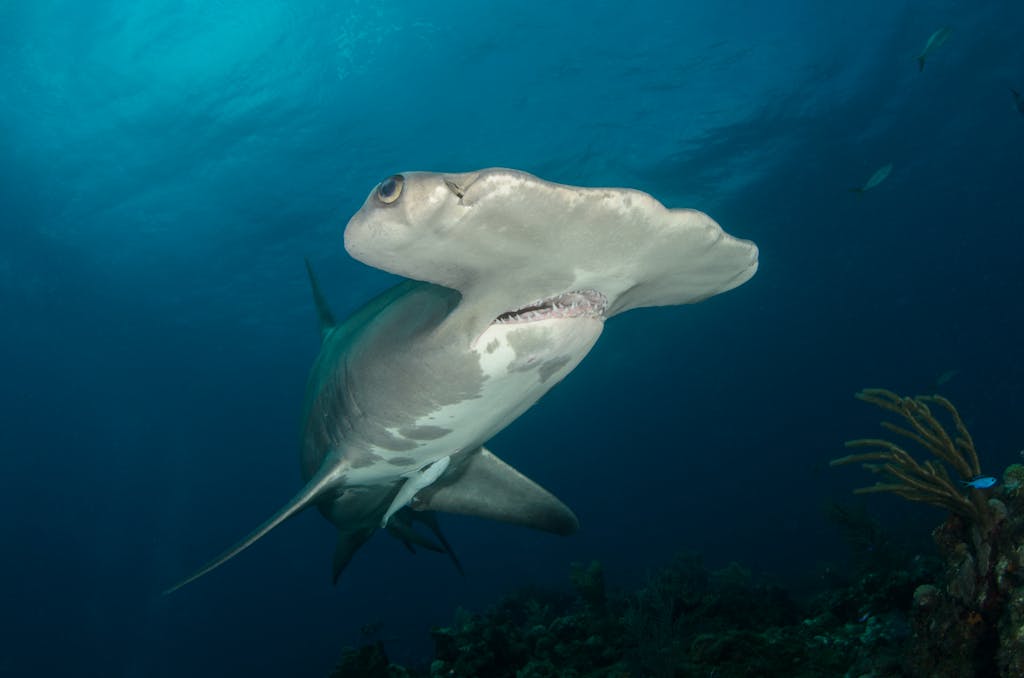
The Longfin Mako’s interactions with other marine species further underscore its importance to the ecology. Dolphins and other sharks are intelligent, competing predators that consciously change their tactics and hunting strategies.
Should this shark’s population disappear, ecosystems may become imbalanced, creating cascading effects on marine biodiversity.
Contribution to biodiversity
The longfin mako plays an important role in genetic diversity among sharks and other marine species. Its predatory habits help to maintain strong marine habitats.
By preying on the weaker, sickly prey it helps indirectly promote the overall health of the population. This web of connections strengthens the health and balance of ocean ecosystems, where each species contributes to the functioning of the whole.
By protecting Longfin Mako sharks as well as other diverse shark populations, we can help to preserve a healthy, balanced ocean ecosystem.
Educational and scientific significance
Protecting longfin makos helps us understand important concepts in marine biology, like predator-prey dynamics and shark migration patterns. These studies help us guide sustainable fisheries management and conservation strategies, which is key to protecting our oceanic resources.
Longfins Makos have become ambassadors for their kind, starring in educational documentaries that generate public interest and mobilize action to protect their endangered redfin relatives.
Conclusion
The longfin mako shark is truly a special species and key to our oceans. It’s beautiful shape, speed, and role in the ocean’s balance ecosystem make it a valuable asset. Juxtaposed with the shortfin mako, it really highlights how amazing and different these sharks truly are. The longfin mako, an apex predator with few equals, is under siege. As overfishing and habitat destruction push it ever closer to the brink of extinction, all a greater need for awareness and action.
Protecting this shark is critical to protecting the health of our oceans, ecosystems that serve us all. The more we learn and the more we support ocean conservation, the greater positive impact we can have. Every action, big or small, contributes to building a future where species like the longfin mako can thrive. Until next time, stay wild, and keep looking down at the world’s amazing biodiversity.
Frequently Asked Questions
What is a longfin mako shark?
Despite its impressive features, the longfin mako shark has been less studied than the shortfin mako shark. Its unique characteristics, such as its very long pectoral fins and torpedo-shaped body, contribute to its status as a fascinating subject in marine biology.
How is the longfin mako shark different from the shortfin mako?
The biggest distinction is in their fins. Longfin makos have much larger pectoral fins, whereas shortfins possess smaller, more pointed fins. Longfin makos are slower and less aggressive than shortfins.
How fast can a longfin mako shark swim?
The longfin mako shark, while still fast, isn’t quite as speedy as its shortfin cousin. This top speed, roughly equivalent to 22-25 mph, makes it one of the slower mackerel sharks. Its comparatively larger fins, including the first dorsal fin and caudal fin, provide more control but reduce efficiency for high-speed swimming.
What is the conservation status of the longfin mako shark?
The longfin mako shark, rated as “Vulnerable” by the IUCN, faces significant threats from overfishing and bycatch in the longline fishery. Immediate conservation action is essential to protect this species from extinction.
Why is the longfin mako shark important?
As a highly mobile, predatory shark, the longfin mako shark is an apex predator crucial to the health of marine ecosystems. This species plays a key role in maintaining balanced populations of schooling fishes and pelagic cephalopods. By protecting the longfin mako, we’re ensuring healthy oceans and rich biodiversity.
Are longfin mako sharks dangerous to humans?
Longfin mako sharks are not dangerous to humans. Unlike their counterparts, shortfin makos, they are not aggressive. Swimmers and divers almost never see them on dive adventures because they avoid shallow-water habitats.
What are the biggest threats to longfin mako sharks?
Overfishing, bycatch in tuna and swordfish fisheries, and habitat degradation are some of the biggest threats to the longfin mako shark. These factors have driven longfin mako shark populations, particularly in the western Atlantic, to a point of no return, necessitating conservation action to survive.

